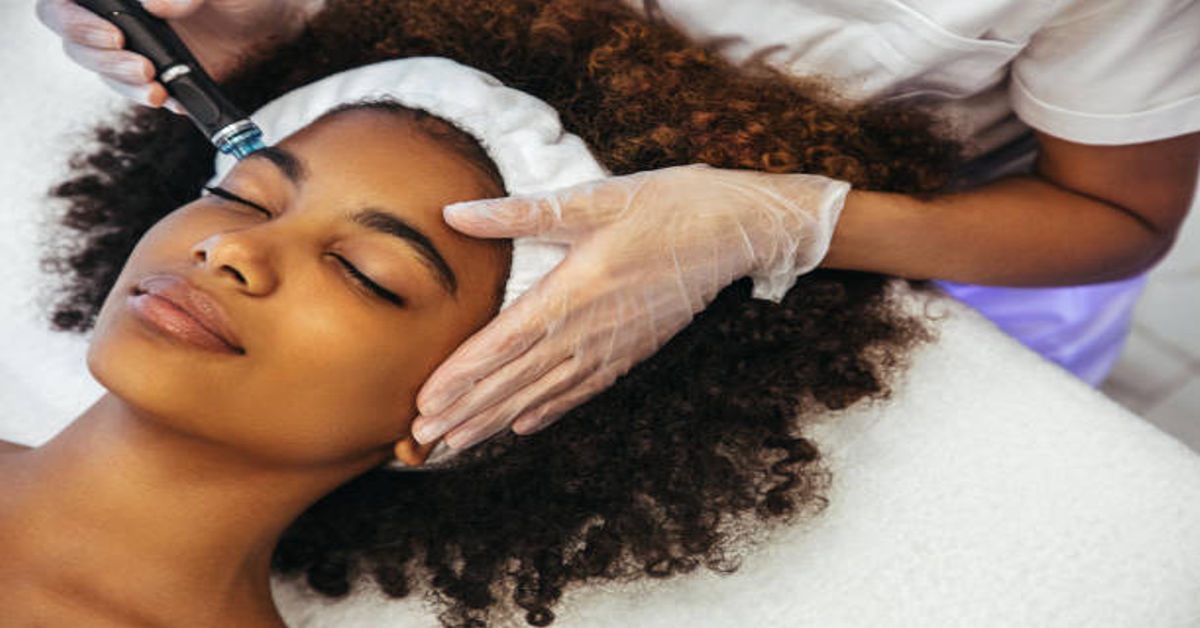
The beauty industry, known for creativity, innovation, and global appeal, has also been a space where issues of cultural sensitivity and representation have repeatedly surfaced. One of the notable instances that sparked debate in recent years was connected to Sephora and the broader issue of blackface — a term that carries deep historical weight and emotional impact. Understanding what this controversy means, why it matters, and how brands can evolve beyond such mistakes is crucial in today’s multicultural, socially conscious world.
This article explores the background of the Sephora blackface controversy, the meaning and origins of blackface, the cultural implications of such actions, and how the industry can progress toward genuine inclusivity and respect.
The Origin and Meaning of Blackface
To understand why the word “blackface” evokes such strong reactions, we must look at its history. Blackface refers to the practice of non-Black performers darkening their skin using makeup or other materials to imitate caricatures of Black people. This practice emerged in the 19th century during American minstrel shows, where white performers painted their faces black and exaggerated features to mock and stereotype African Americans.
These performances were deeply demeaning. They portrayed Black people as inferior, unintelligent, or comical — stereotypes that reinforced racist ideologies during and after the era of slavery. Even after minstrel shows faded, blackface continued to appear in films, Halloween costumes, advertisements, and fashion, each time sparking renewed outrage and discussion about racism and insensitivity.
Understanding this painful legacy is essential because when a brand or public figure engages in something resembling blackface — whether intentionally or through ignorance — it echoes centuries of disrespect and exploitation.
Sephora and the Controversy
Sephora, one of the world’s largest beauty retailers, has built its reputation on diversity, offering products for a range of skin tones and celebrating individual beauty. However, like many companies operating in a highly visual and competitive industry, it has faced moments where its marketing choices or public image came under scrutiny.
The Sephora blackface controversy refers to instances where Sephora or affiliated campaigns were accused by the public of using imagery, makeup looks, or marketing visuals that resembled blackface, even if unintentionally. In such situations, social media often plays a major role — a single image can ignite global outrage within hours.
Although Sephora has not been the only beauty brand to face such accusations, the incident served as a wake-up call about how deeply the industry must understand cultural context before launching visual content.
The controversy raised several questions:
- How could a brand that promotes diversity be accused of cultural insensitivity?
- Was this a matter of ignorance, oversight, or systemic bias?
- What lessons can the beauty industry learn from such events?
To explore these questions, we must look beyond the single event and examine the broader cultural and corporate dynamics that shape these situations.
Why Such Controversies Arise in the Beauty Industry
The beauty and fashion industries thrive on creativity, visual expression, and trends. However, creativity without awareness can lead to misrepresentation or offense. There are several reasons why controversies like the Sephora blackface issue emerge:
| Cause | Explanation | Industry Example |
|---|---|---|
| Lack of Cultural Awareness | Teams may not fully understand the cultural or historical meaning behind certain imagery. | Misuse of traditional attire or skin-darkening makeup in campaigns. |
| Homogeneous Creative Teams | A lack of diversity within decision-making groups can lead to blind spots. | Ads approved by people unfamiliar with racial sensitivities. |
| Trend Following without Context | Brands may mimic trends like body art or makeup looks without researching their origins. | “Tribal” makeup inspired by African or Indigenous cultures without credit. |
| Global Market Miscommunication | What is acceptable in one culture can be offensive in another. | Campaigns launched globally without localization or review. |
| Pressure to Shock or Stand Out | Marketing often rewards attention, even if negative, leading to risky creative choices. | Provocative imagery meant to “go viral” backfires. |
In many cases, such missteps are not deliberate acts of racism but rather failures of awareness, education, and sensitivity. Yet the consequences are real, affecting both communities and brand reputations.
The Impact on Sephora’s Image
When a major brand becomes linked to terms like “blackface,” it can experience both reputational damage and consumer backlash. In the digital age, public opinion spreads rapidly, and companies are expected to respond swiftly and authentically.
Sephora, already known for working with a wide range of influencers and products for every complexion, faced criticism and calls for accountability. Customers expected not only an apology but also structural change.
The brand responded by reaffirming its commitment to inclusion, expanding shade ranges, supporting Black-owned beauty brands, and training employees on diversity and anti-bias. These efforts signaled a broader movement within Sephora to ensure such issues would not recur.
This incident also demonstrated that intent does not erase impact. Even if the imagery or campaign was not meant to harm, its reception by the public — especially by communities historically hurt by racial caricatures — carries greater weight.
Blackface and Cultural Appropriation: The Deeper Connection
The Sephora blackface controversy also links to the wider issue of cultural appropriation in beauty and fashion. Cultural appropriation occurs when elements of a minority culture are used by members of a dominant culture without understanding or respecting their significance.
When beauty brands darken models’ skin or borrow cultural symbols without acknowledgment, they often profit from aesthetics rooted in histories of oppression. This leads to the painful irony of industries celebrating features once ridiculed or marginalized.
For example:
- Dark skin tones, once excluded from mainstream beauty, are now commercialized through tanning products and bronzing makeup.
- Hairstyles like cornrows or afros, historically stigmatized for Black individuals, are suddenly deemed “fashionable” when worn by non-Black celebrities.
Such contradictions highlight why discussions about Sephora and blackface matter. They force brands to confront how beauty standards have been racialized and how modern inclusivity must go beyond token representation.
Lessons Learned from the Sephora Blackface Controversy
Sephora’s controversy serves as both a warning and a lesson for global brands. To avoid repeating history, companies must embrace cultural literacy and ethical creativity. Here are some key takeaways:
| Lesson | Application | Expected Outcome |
|---|---|---|
| Diversity in Decision-Making | Include people of varied backgrounds in marketing and creative review teams. | Prevents blind spots and ensures sensitivity. |
| Cultural Education Programs | Conduct mandatory training on cultural history and racial awareness. | Builds empathy and informed judgment. |
| Accountability Mechanisms | Create internal review systems for campaigns involving racial or cultural elements. | Identifies risks before public release. |
| Community Engagement | Collaborate with advocacy groups, cultural experts, and influencers. | Encourages authentic representation. |
| Transparent Apologies and Actions | When mistakes occur, address them openly and commit to visible change. | Restores trust and brand integrity. |
These lessons are not just for Sephora but for every brand that operates globally. Diversity must not be a marketing slogan — it has to be part of a company’s DNA.
Sephora’s Steps Toward Inclusivity
After the controversy, Sephora undertook several initiatives to reinforce its values of inclusion and equality. Among them were:
- The Sephora D&I Pledge: The brand introduced diversity and inclusion goals focusing on fair representation across staff, product offerings, and marketing.
- Support for Black-Owned Brands: Sephora began highlighting and stocking more products from Black entrepreneurs and creators.
- Bias Training for Employees: Company-wide training helped staff understand unconscious bias, microaggressions, and inclusive service.
- Commitment to Fair Product Representation: Sephora expanded foundation and concealer shade ranges, setting new standards for inclusivity in beauty products.
- Community Dialogues: The company hosted public discussions and partnered with diversity advocates to promote awareness in the beauty space.
These actions represent an important shift: moving from reaction to prevention. Instead of waiting for backlash, Sephora and similar companies now work proactively to build equitable brand cultures.
The Broader Industry Impact
The Sephora blackface incident is part of a larger narrative within the beauty and fashion world. Other brands — from Prada to Gucci — have faced similar criticism for racially insensitive designs. Each controversy pushes the industry toward greater consciousness and responsibility.
The positive outcome is that brands are learning. There is now a broader recognition that beauty marketing is not just about aesthetic appeal; it carries social and ethical meaning. Representation is power — it shapes how people see themselves and others.
In recent years, beauty companies have made notable progress:
- Campaigns now feature models of all ethnicities, ages, and genders.
- Product formulations and shades reflect the real diversity of global consumers.
- Influencers from marginalized communities are gaining visibility and partnerships.
While there is still much work to do, these shifts show that change is possible when brands listen, learn, and act.
How Consumers Shape Accountability
Social media has given consumers unprecedented power. Platforms like Twitter, Instagram, and TikTok allow individuals to call out problematic behavior instantly and collectively. This democratization of voice means that brands can no longer hide behind marketing departments or PR filters.
The Sephora blackface controversy gained traction largely because consumers were vocal about their disappointment. They demanded explanations, apologies, and improvements. This consumer activism reflects a new era of accountability — one where ethical standards are crowd-enforced.
Consumers today do not just buy products; they buy into values. Brands that fail to align with social justice, authenticity, and transparency risk losing market trust. This dynamic pushes corporations toward continuous improvement, making ethical responsibility a business imperative, not just a moral choice.
Moving from Apology to Action
An apology alone is no longer sufficient. The real measure of a company’s growth lies in what it does after a mistake. Sephora’s follow-up actions demonstrate that meaningful change requires structure, investment, and time.
To rebuild trust after such controversies, companies should:
- Acknowledge the Mistake Publicly — Silence can be perceived as avoidance.
- Explain What Happened — Share context, not excuses, to clarify the issue.
- Outline Corrective Steps — Communicate clear plans for change.
- Engage with Affected Communities — Listen directly to those hurt or offended.
- Report Progress — Keep stakeholders informed of improvements over time.
Education as Prevention
The root cause of many cultural controversies is ignorance. Therefore, education — within companies and among consumers — is the strongest preventative tool.
Incorporating cultural studies into corporate training can teach employees:
- The history of racial imagery and its modern implications
- The difference between appreciation and appropriation
- The role of language, symbolism, and color in cultural representation
- How to identify and challenge implicit biases
When awareness becomes a shared value, creative freedom and cultural respect can coexist.
The Role of Representation
Representation in beauty is not only about showcasing diverse skin tones — it’s about who makes decisions behind the scenes. Having diverse creative teams ensures authenticity and prevents tone-deaf campaigns.
For Sephora and similar brands, this means:
- Hiring talent from different racial and cultural backgrounds
- Promoting underrepresented voices to leadership roles
- Partnering with influencers and creators who reflect real diversity
Representation transforms inclusivity from a marketing gesture to a cultural reality.
A Global Perspective on Race and Beauty
While blackface is primarily rooted in Western history, the issue of racial insensitivity in beauty extends globally. Many regions still idolize lighter skin tones, creating a hierarchy of beauty that marginalizes darker complexions.
In Asia, Africa, and Latin America, skin-whitening products dominate shelves, often marketed as symbols of success or desirability. These practices reflect deep colonial legacies that brands must actively dismantle.
Global beauty brands like Sephora have a unique opportunity to reshape these narratives by:
- Celebrating all skin tones equally
- Removing discriminatory marketing language
- Educating consumers about natural beauty diversity
By doing so, they can play a part in decolonizing beauty standards and creating healthier global ideals.
The Future of Inclusive Beauty
The beauty industry is evolving toward inclusivity, authenticity, and social consciousness. The Sephora blackface controversy, while regrettable, has contributed to important conversations that push the industry forward.
The future of beauty lies in:
- Representation that reflects the world’s true diversity
- Products designed for all skin tones and textures
- Advertising that empowers rather than stereotypes
- Education that builds empathy and understanding
Consumers are no longer passive — they expect brands to act as allies in promoting equality. The companies that thrive in the next decade will be those that listen, adapt, and lead with integrity.
Conclusion
The Sephora blackface controversy serves as a mirror reflecting the challenges and responsibilities of the modern beauty industry. It reminds us that creativity without consciousness can harm, but awareness coupled with accountability can heal.
Blackface, with its painful historical roots, symbolizes more than a makeup mistake — it represents centuries of racial caricature and exclusion. Yet, every controversy also offers an opportunity for growth. Sephora’s journey from backlash to reform demonstrates that when brands face criticism with humility and a willingness to change, they can emerge stronger and more inclusive.
The path toward equitable representation is ongoing. It requires persistence, education, and empathy from both companies and consumers. Ultimately, the goal is not to avoid controversy, but to create a world where inclusivity is so deeply ingrained that such controversies no longer arise.
FAQs
1. What is the Sephora blackface controversy about?
It refers to public criticism of Sephora or affiliated campaigns accused of using imagery that resembled blackface — a historically racist practice. The controversy sparked discussions about cultural sensitivity and diversity in beauty marketing.
2. Why is blackface considered offensive?
Blackface has origins in minstrel shows where white performers mocked and dehumanized Black people. It perpetuates racist stereotypes and trivializes centuries of oppression, making it deeply hurtful and unacceptable today.
3. How did Sephora respond to the controversy?
Sephora acknowledged public concerns and reinforced its commitment to diversity by supporting Black-owned brands, implementing anti-bias training, and expanding inclusive product ranges.
4. What can brands learn from this issue?
Brands must ensure cultural literacy within their teams, prioritize diversity, and review marketing content for potential insensitivity before public release. Accountability and education are key to avoiding such mistakes.
5. How can consumers promote inclusivity in beauty?
Consumers can support inclusive brands, challenge biased representations, and advocate for fair treatment of all skin tones and cultures within the beauty industry.





